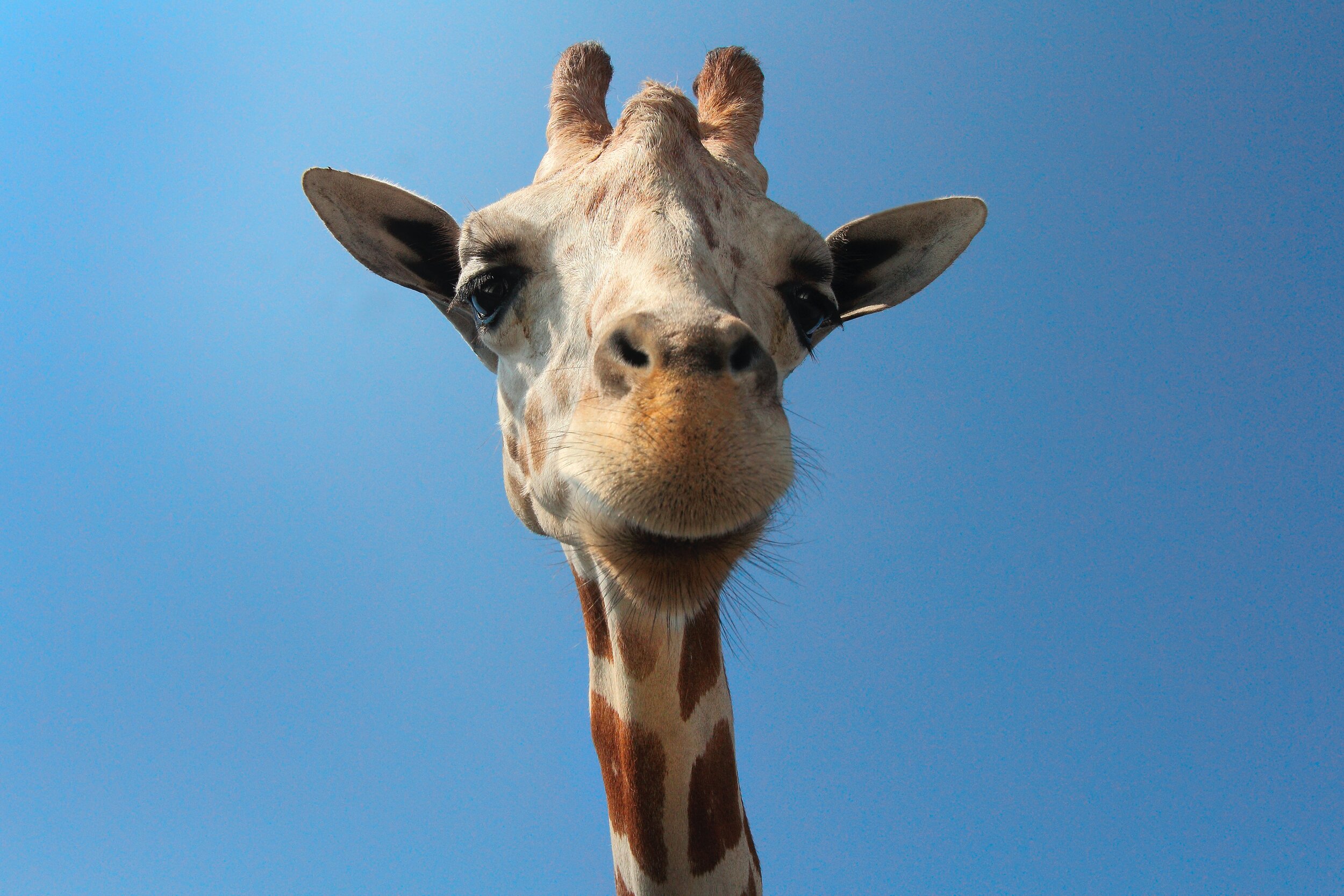Students of animal cognition: Have you considered a career in animal welfare?
This blog post was updated Sept 2023. It was originally sparked by an invitation from the Women in Cognitive Science Leadership Team to speak in the Cognitive Science 2021 session “Navigating the maze: Developing your career in animal cognition.” You can watch a recording of the presentation here.
Animal Welfare: An Alternative Path for Students of Animal Cognition
This post is intended for people who are considering, pursuing, or have recently completed a PhD in animal cognition. Depending on your graduate program, you may be more or less familiar with options outside of traditional academia. Regardless of your program, you’re probably well aware of the unique freedoms and limitations that come along with a traditional pursuit of a university faculty position. Perhaps you’ve started to explore some non-academic or less traditional paths to consider post-graduation, such as consulting or working in industry. I want to call your attention to one option you may not have considered — being an animal welfare scientist.
There’s a good chance you didn’t know this job existed. I didn’t when I was completing my PhD. The job of an animal welfare scientist is to design and conduct research to measure the welfare of some set of animals, and then often work with others to make recommendations about how to enhance welfare based on your findings and expertise. What you may not realize is that the knowledge base you’ve developed in your study of animal cognition makes you super valuable in the field of animal welfare. Here’s why.
Female student studying at table. Photo by Kyle Gregory Devaras on Unsplash.
Animal Cognition is Key to Animal Welfare
My representation of The Five Domains Model (references below).
Modern thinking about animal welfare is all about how an animal feels about its situation. The dominant model, The Five Domains Model, provides a blueprint demonstrating that all the things that can impact an animal’s welfare status do so dependent upon how they are filtered through an animal’s mental domain. Like us, other animals have unique temperaments and histories that can influence the way they perceive and feel about certain situations. This unique filtering through the mental domain generates an individual animal’s welfare status.
And who has been trained to measure the mental domain of animals? You! Modern animal welfare science relies on the study of animal cognition.
If you’re intrigued by this career path, let me share why the role of an animal welfare scientist may be a great personal and professional fit, especially for women in science.
I am a zoo animal welfare scientist. So I’m working in one industry — the zoo industry — while other animal welfare scientists focus on companion animals, agricultural animals, laboratory animals. More recently, the welfare of wild animals has become a focus as well. Interest is growing and people are needed. Sure you may need to add to your training to be prepared in the industry you choose, but you are on a good track to contribute to welfare science in any of these industries.
Closeup of giraffe face with plain blue background. Photo by Gary Bendig on Unsplash.
The Personal and Professional Draw of a Career in Animal Welfare Science
A career as an animal welfare scientist may be an appealing avenue for curious scientists who care deeply about animals and want a career path that doesn’t pull them away from their family. Let me unpack why a career in zoo animal welfare science works for me personally and professionally:
I am near my children. I spent a number of years conducting field work with chimpanzees in Zambia. I loved it (still do) - but knew that I wanted a more local focus that would allow me to be present in the way that I preferred once my first daughter was born.
I am not responsible for a captive colony. I have also studied monkeys in laboratory settings, colonies maintained for research purposes. I personally like that the animals I study now are not here for my research purposes. I don’t have to shoulder the ethical or the logistical responsibilities of having a captive colony for the purposes of my research questions. By studying in zoos, where their missions are multi-faceted, I am able to learn about animals that are going to be in captivity regardless of my study.
The flip side to this could be a limitation, depending on your goals. You won’t have the same level of control over the animals or their environment as you would over a research colony. Your sample sizes will also be smaller.
The work that I do directly benefits the animals I study. It brings me a lot of personal reward to know that the research I do directly benefits the animals. The questions that I choose to pursue are the ones that the animals need answered.
I get to be creative. Oh so creative. Adopting or developing paradigms to new species, some that have rarely been studied, to understand how they feel. Fifteen years ago I would not have thought I could be trying to figure out what a happy toad looks like.
The intellectual space is not crowded. There are many unanswered questions, untouched questions even! This is extremely different from when I was working in the field of primate social cognition, and very different from what I’ve watched my partner navigate when he was active in the field of human memory and language processing. If you are a cognitive scientist looking for some breathing room, this may appeal to you. For myself, I have found this open space to be quite rewarding because there is more room for discovery and meaningful contribution.
I share science with the public. If you like radio, TV, or writing for general audiences, there are plenty of opportunities to do so. And you can reach a lot of people; zoos have millions of visitors a year and great outreach programs. I love to see the excitement on kids’ faces and I see the relief on adults’ faces when they learn that the zoo has scientists dedicated to ensuring the welfare of the animals.
Single tortoise, head up, facing camera. Photo by Cedric Fox on Unsplash
Where to Find a Job in Animal Welfare Science
If a career in animal welfare science interests you, there are (at least) three paths you can consider.
You could either pursue a university position and then partner with a zoo, aquarium, animal shelter, or other organization and study the animals in their care. If you go this route, you’ll want to build solid relationships and understand the needs of the partnering organizations so that the benefit of the collaboration is obvious on both sides. Just a few examples of scientists who have successfully forged this path include Dr. Meredith Bashaw at Franklin & Marshall College, Dr. Samantha Ward at Nottingham Trent University, and Dr. Jennifer Vonk at Oakland University.
Alternatively, you could be primarily employed by a zoo, aquarium, or other organization as their resident scientist. These positions can take slightly different forms, but a good place to keep an eye out is this zoo careers website which compiles opportunities around the world for scientists. Some examples of females in this kind of role include Dr. Grace Fuller at Detroit Zoo, Dr. Bethany Krebs at San Francisco Zoo, and me at Lincoln Park Zoo.
Finally, you could consider finding a position with an animal welfare organization such as the Humane Society of the United States, the American Society for the Prevention of Cruelty to Animals, Wild Animal Initiative, or Animal Welfare Institute.
Final Note: The Opportunities Might Not Be Obvious
It can be tricky to identify a welfare science position because jobs can have many different titles, and welfare may be referred to as wellness, wellbeing, or something else. So read the descriptions carefully and if it sounds remotely on target, check it out. If you’re having trouble finding openings or just want a better view, consider reaching out to a current animal welfare scientist to learn more about their job, and hear ideas they have about how you can get involved. And yes, jobs may be limited at any given moment, but keep your eyes open. As attention to animal welfare issues continues to increase in the public domain, the more animal welfare science opportunities there will be.
Learn more
This blog post was motivated by an invitation by the Women in Cognitive Science Leadership Team to speak in the Cognitive Science 2021 session “Navigating the maze: Developing your career in animal cognition.” Learn more about the Women in Cognitive Science group here.
References
Mellor, D. J., & Reid, C. S. W. (1994). Concepts of animal well-being and predicting the impact of procedures on experimental animals. In Improving the Well-Being of Animals in the Research Environment; Australian and New Zealand Council for the Care of Animals in Research and Teaching: Glen Osmond, SA, Australia, pp. 3–18.
Mellor, D. J., & Beausoleil, N. J. (2015). Extending the ‘Five Domains’ model for animal welfare assessment to incorporate positive welfare states. Animal Welfare, 24(3), 241. Link to article.
Mellor, D. J., Beausoleil, N. J., Littlewood, K. E., McLean, A. N., McGreevy, P. D., Jones, B., & Wilkins, C. (2020). The 2020 five domains model: including human–animal interactions in assessments of animal welfare. Animals, 10(10), 1870. Link to article.



